
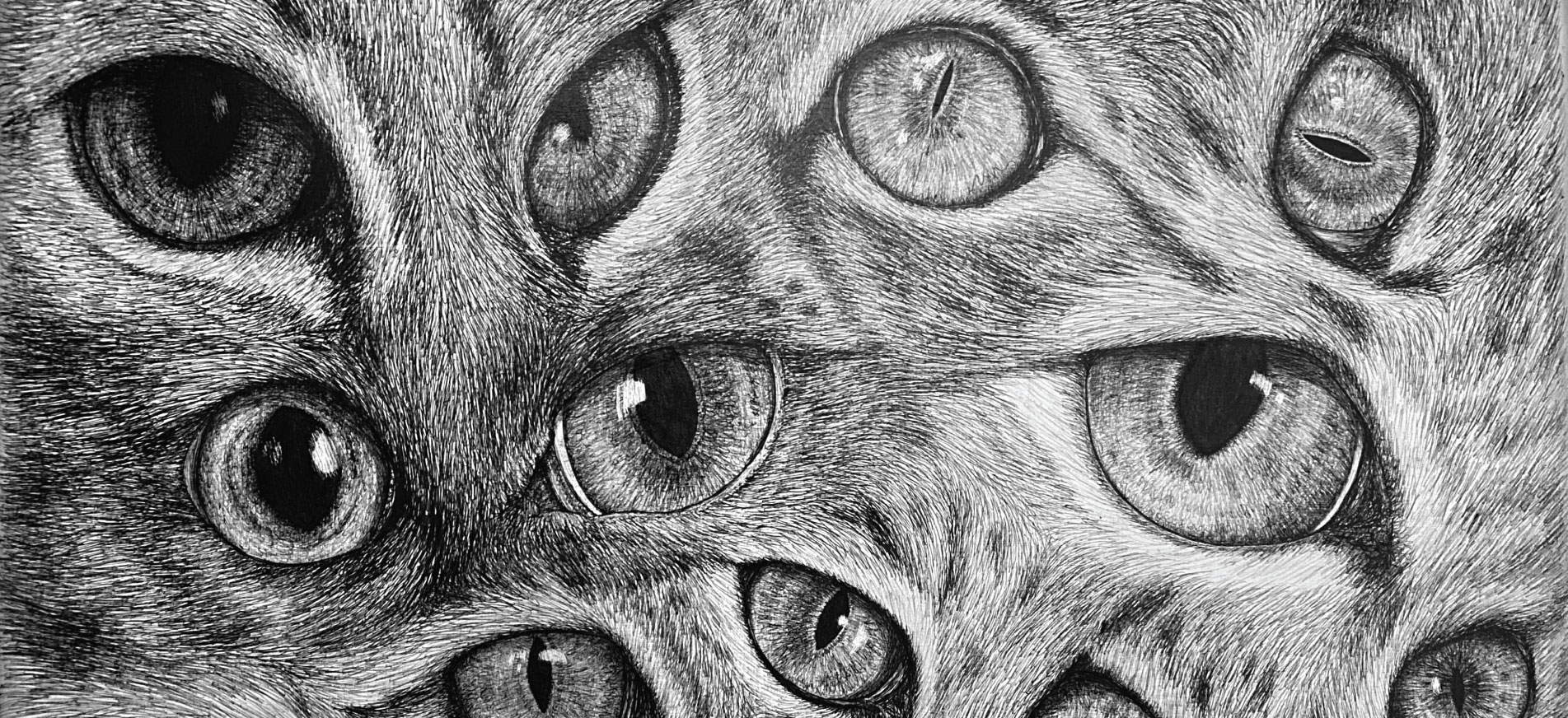
Cinco Preguntas with Hilary Rochow: Artist and Curator at Rojo Gallery
Nestled in the heart of San Antonio’s Southtown Arts District, the historic 1906 warehouse pulses with creative life, housing art studios and galleries that collectively shape the neighborhood’s artistic identity. Among them is Rojo Gallery, an intimate yet impactful space led by artist and curator Hilary Rochow. In our recent conversation, Rochow reflects on the intersections of her industrial design background and her evolving art practice, her deep affinity for animals and how they manifest in her visual language, and her ongoing exploration of both two- and three-dimensional forms. She also speaks candidly about finding her footing as a newcomer to San Antonio’s art scene, her commitment to education and community engagement, and the corners of the local arts ecosystem that continue to inspire her—on the ground and online.
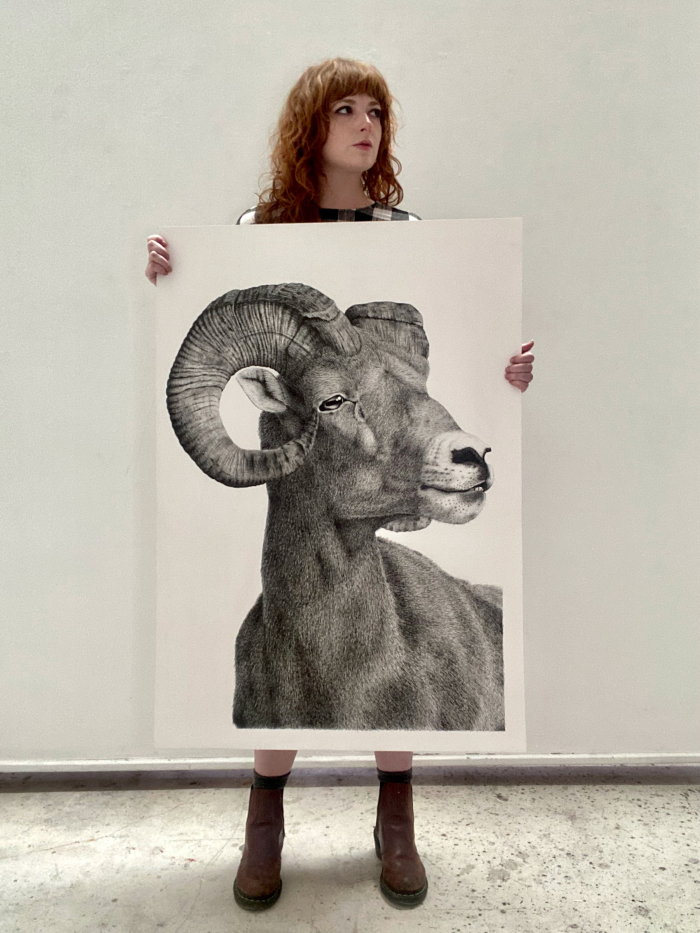
MiSA: Your background is in industrial design—how has that training shaped your approach to both drawing and ceramics, especially in terms of form, function, and visual communication?
HR: Though my professional focus has shifted largely to fine art, I'm forever grateful that I learned design foundations, especially how to work through the design process. Through the pursuit of this knowledge, I became practiced in a kind of thinking that is iterative, innovative yet practical, and focused on solutions. As a design student, you learn to be less precious with your initial ideas and more curious about which of your ideas actually work in a given situation. I've found that this mode of thinking is especially in line with ceramic work. As much as I value the pieces I make, a certain amount of detachment is necessary until the final firing is over. When it comes to functional pieces, I enjoy approaching them with the question, "Does this actually work?" Form, function, visual appeal, and audience are all metrics I use to evaluate the pieces I make. Some will inevitably be more successful than others, and that's a part of the process. I suppose that's true with any artwork. Something else especially present in ceramic work is the risk of failure in every step, and I like that. It forces you to be open to curiosity and learning in a way that truly does feed the little design-loving corner of my brain. Especially as I get older, I find great joy in every chance I get to engage with a student mindset. It's almost a type of play at this point, which is absolutely a necessary component to any creative practice, especially at a professional level.
Another influence of my design training is my choice of ink on paper. In pursuit of an industrial design degree, we students learned a specific style of sketching that is focused on communication and precision. We were taught this in part by being taught to use only non-erasable media. This helped us build confidence as well as connect our thoughts more directly to our hands. Though I at first relinquished my graphite pencil with great reluctance, my tool of choice in all drawing quickly became pen. I love the immediacy of an ink mark, I love that any mistakes must be confronted down the line, and I love the visual communication that's possible through layers of different marks laid down in the right way. There is an energy that is captured in ink because every individual mark does ultimately matter in the totality of the final collection of marks. Whatever space your brain and hand are in shows up on paper when you use ink, and there's something extremely honest about that. It's unique in that way, as most drawing or painting media can be pushed around, covered up, or erased. There's something a little impetuous and wild about ink even as it is capable of extremely clean mark making, and something about that appeals to me on a number of levels.
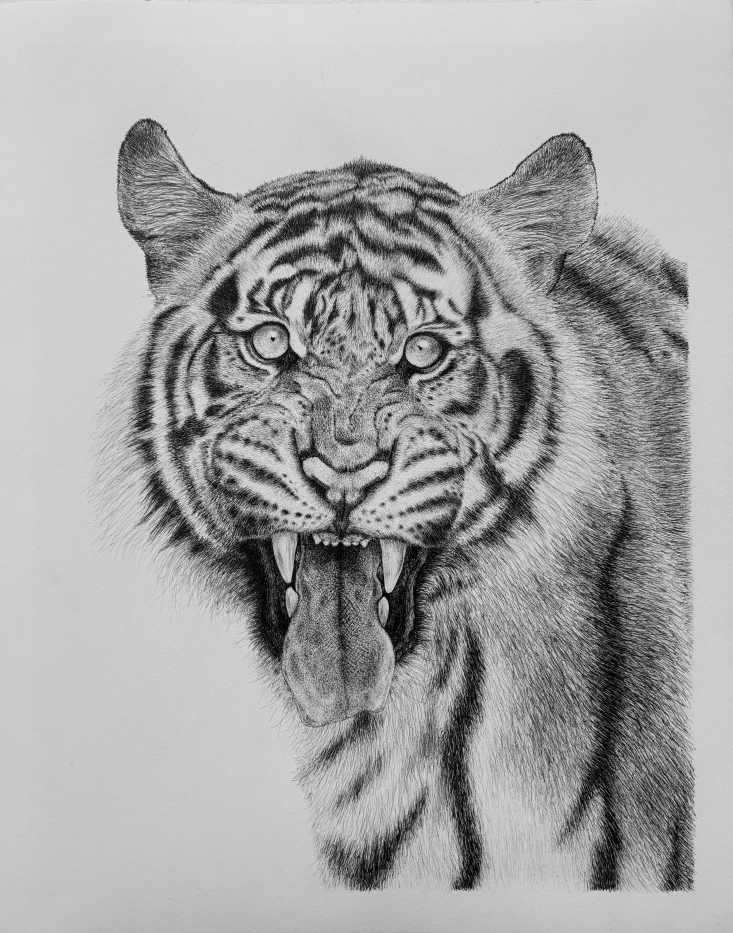
MiSA: Animals are central to your drawing practice and you have mentioned that your animals are studio companions. What draws you to animal figures, and how do you see them functioning symbolically or narratively in your work?
HR: When you look back on human history, you find that animals are integral with our own development as a species. Our communities would not exist without agriculture, and our interconnectedness would not exist without animals more capable than us of long-distance travel. There are no fables, folklore, or religions that I know of that don't use animals as recurring archetypes or symbols. So I'm not alone in my fascination with the natural world and its potential as art subject. What I personally like most about drawing animal figures as opposed to human is that it seems people have much fewer internal biases towards animals than they do towards other humans. I find that viewers tend to approach my work in a very personal way, often through stories or memories of their own. I feel my work is most successful when someone tells me about how an animal I've depicted reminds them of something from their own life. I think the natural world offers us a stripping down of barriers in a way few human-made things do, and it's very meaningful for me to be able to make things that connect with others beyond any meaning I may have given the objects when I made them. I think a lot about community and the memories we leave behind us. My own memories are filled with animals. I often retreat to nature to calm and reconnect with myself. It seems almost an inevitable return in my own life, so I return to it visually as well. I don't know if I have a set symbology in my head when I make work though there are definitely through lines if I look for them.
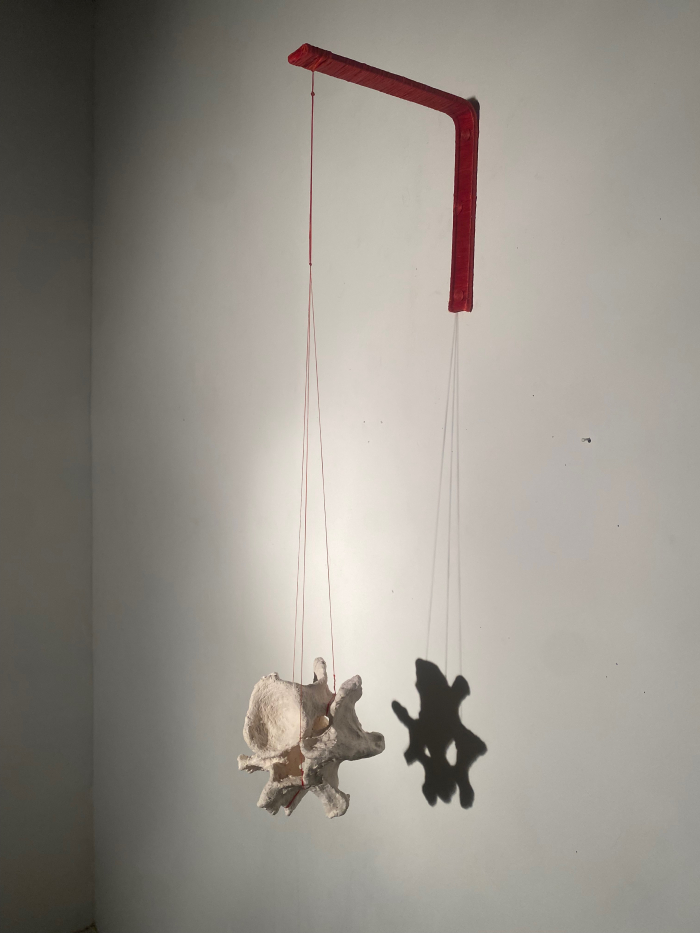
MiSA: You work across 2D and 3D media—what decisions guide whether a concept becomes a drawing, a sculpture, or a functional object?
HR: For me, the medium definitely guides the concept. Drawing is something I've done my whole life and something very tied to a continued attempt to express my own emotional landscape. The sculptural work is really a natural progression of the drawing; it's a different application and set of tools, but the attention to detail and mark-making are quite similar. The figurative pieces I make in clay are often parts of a whole, so the final works lean more conceptual. The functional work I make is more of an opportunity for play. I have never lost my love of functional objects (there's that design background again), so with my functional pieces, I enjoy exploring form in a way that is adjacent to my fine art practice but not directly related. I've also learned a lot about the medium itself through this work. I've got a lot of friends who are potters and the amazing thing about clay people is that they are happy to talk process. Truly, everything I know about clay is through the generosity of that community. And because I see the level of perfection a professional potter can reach, I don't pretend to be a professional potter, I just like handbuilding wobbly little vessels and trying to find different ways to turn them into drawings. I tend to return to drawing in one way or another in all facets of my practice, so if there's a true single connection between the media I suppose it's that.
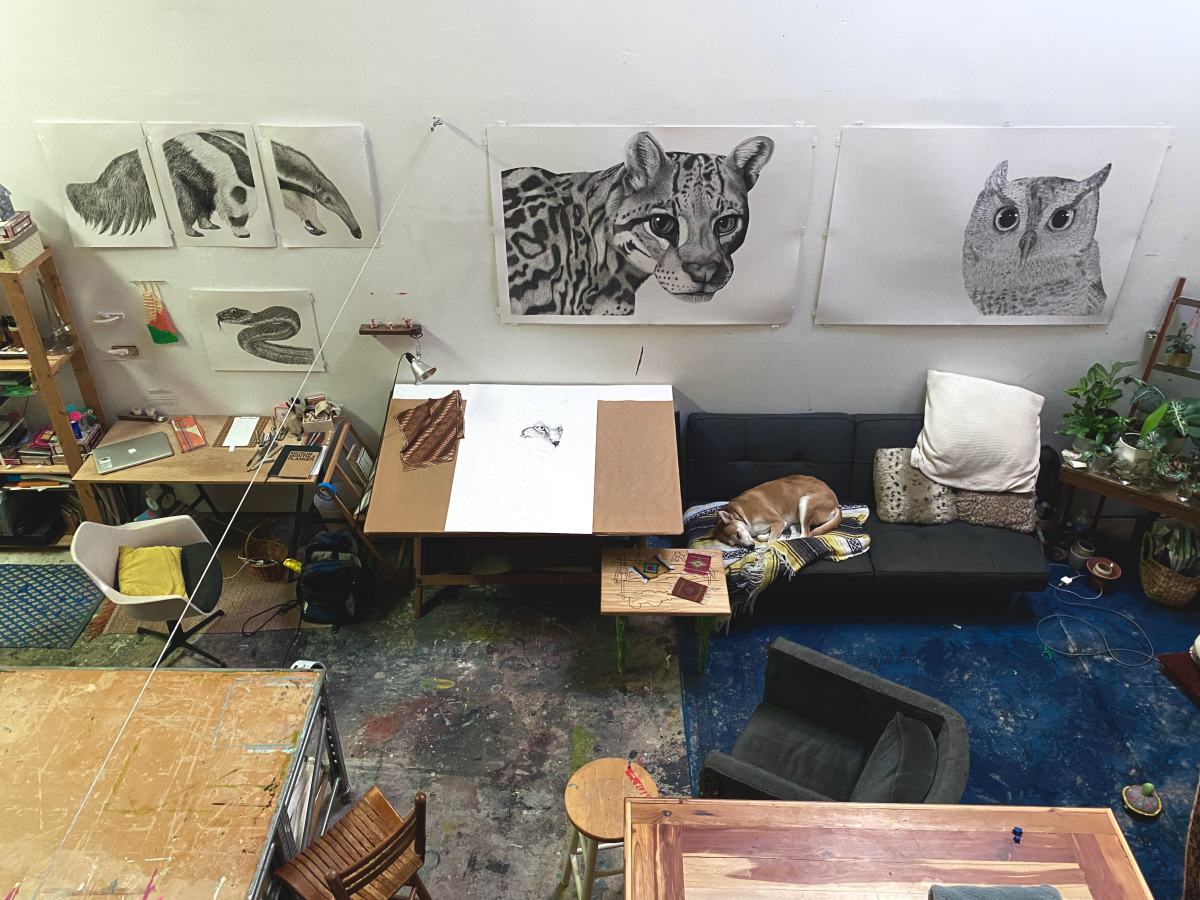
MiSA: Rojo and the Under Construction demonstrate your curatorial interests. How do your roles as curator and gallerist influence your own studio practice and vice versa?
HR: I find it restorative to spend time around art, and it is a great joy of mine whenever I can connect people to art. I believe in community through art and I believe that it's necessary for the human spirit to engage in creativity as often and in as many forms as possible. Seeing how other people process their lived experiences visually is always a source of inspiration, whether in a museum or another artist-run space or in my own gallery. I also love the process of creating an exhibition. It feels good to uplift and celebrate other artists, and having an exhibition space gives me a chance to do that. Creating the flow of an exhibition is, for me, a practice in observation and empathy. I like seeing how the colors, lines, forms, and subjects of the combined works can spark different conversations between the pieces as they live in a space together. It's also interesting to see the choices artists make in how to display their work. I've learned a lot from the artists that I've shown, whether through systems they already had developed or systems we figure out collaboratively. I really see my curatorial work as a way to feed back into a community that has been extremely nurturing to me, both as an artist and a human. I will admit I've taken a small step back from regularly hosting exhibitions. It's not for any lost love, but I have found that I'm at a point in my life where planning, executing, and managing exhibitions on my own spreads me a little too thin on top of my other responsibilities. It's not been a bad practice to look at the number of things I'm involved with and have to make decisions on where I allot my time. Moving forward, I plan to do one or two exhibitions a year to ensure that I can give time and space to the artists I show, as well as have enough time and space for my own art practice. I guess that's actually the biggest way the two practices influence each other - they force me to evaluate my time, energy, and priorities carefully.
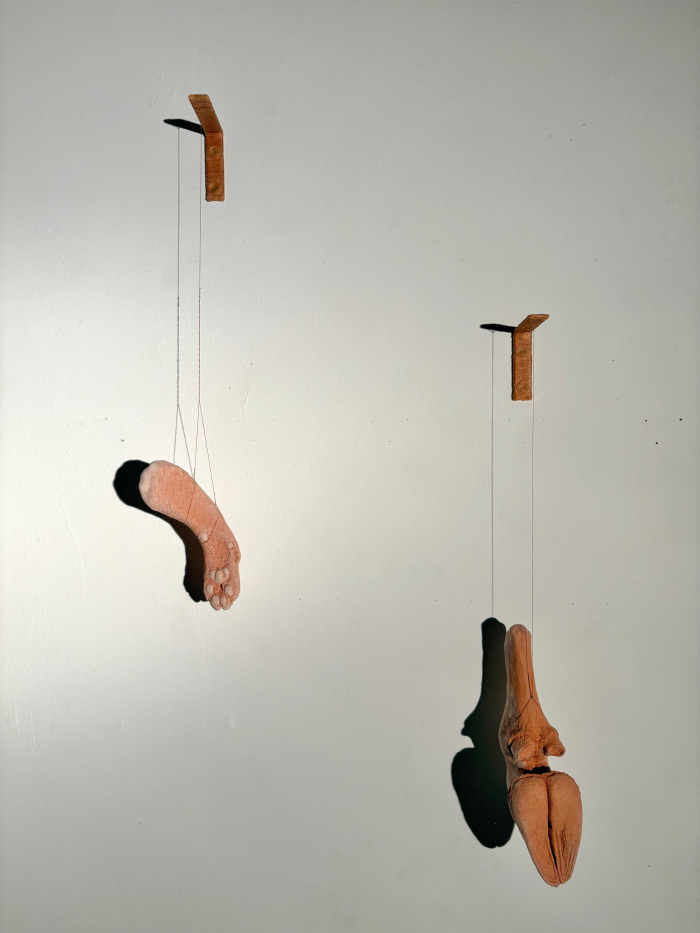
MiSA: The Southtown Arts District is central to your creative life. How does place—particularly San Antonio—inform your materials, subjects, or ethos as an artist?
HR: One of my favorite things about this city is all the green space provided by the River Walk. I am constantly inspired by the nature of this area and love getting to interact with and observe it. Southtown is close to some of the more isolated areas of the river as well as home to several parks. Beyond the natural beauty, San Antonio has a warm and welcoming artist community that has been particularly important to me. Seriously, it's something I was searching for my whole life but didn't have the words for until I found it in person. The people here are genuine, supportive, and dedicated. It's been inspiring to see and partake in. I've moved around a lot in my life and my time in San Antonio has actually been the longest stay I've ever had in one place. A fun thought I return to, something I learned in my solitary year of Catholic school in Massachusetts, is that Saint Anthony is the patron saint of lost objects, animals, and people. And you've got to be a little lost in order to get found. I was definitely a little lost when I moved here. But in being here, I've learned a lot about what it takes to maintain community and friendships and what it means to grow roots in a way I never had the opportunity to before living here. There's also something very artist-run about the community that appeals to me. Like if something doesn't exist and you want it to exist, you can find a way to make that happen. There are a lot of hard-working individuals and this ever-present undercurrent of DIY that I find exciting and inspiring. In my experience, it's been a great place to build a foundation in what it can look like to actually build a life as a visual artist.
To fully appreciate the intricacy and quiet intensity of Hilary Rochow’s work, it’s worth seeking it out in person. For those in or traveling to the Austin area, Rochow will present A Continuing Use of Discomfort, a solo show at The Conroy Gallery, running from August 15 through September 11, 2025.
As one of the founding members of ClaySA, Rochow is also helping to shape San Antonio’s first citywide ceramics-focused studio tour, launching in November 2025. For updates on this ambitious project as it comes together, follow @claysanantonio on Instagram.
Her upcoming solo exhibition at Sala Diaz, opening December 6, 2025, promises an intimate look at her evolving practice—made possible through the support of an Individual Artist Grant from the City of San Antonio.
To keep up with her latest exhibitions and curatorial ventures, follow her gallery at @rojo.etc, and explore more of her artwork via @fly_like_a_fox.